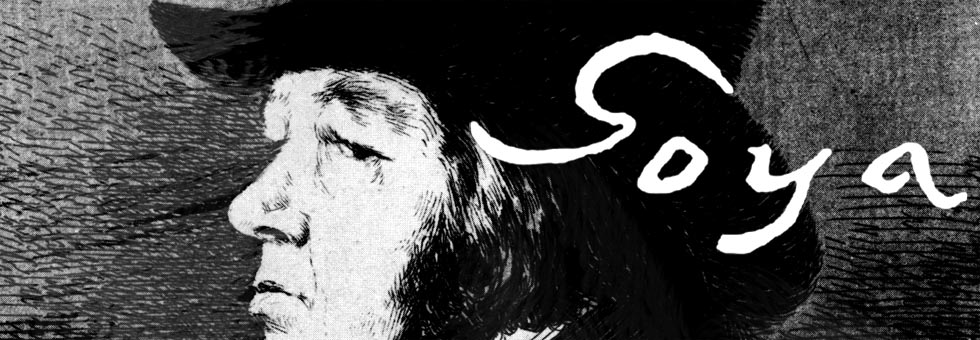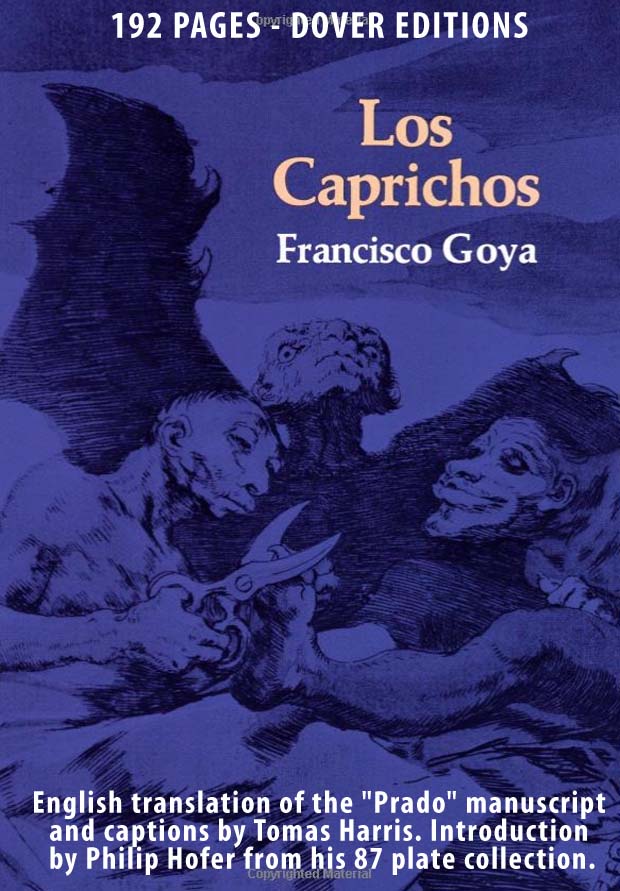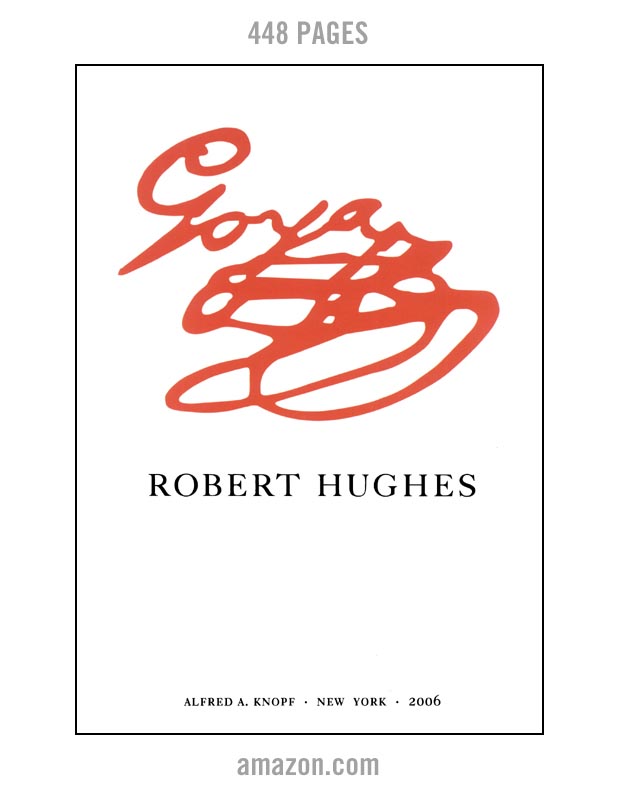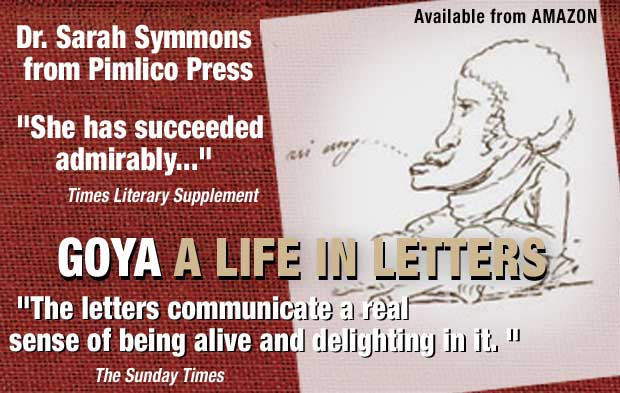Self-portrait
Ink wash drawing
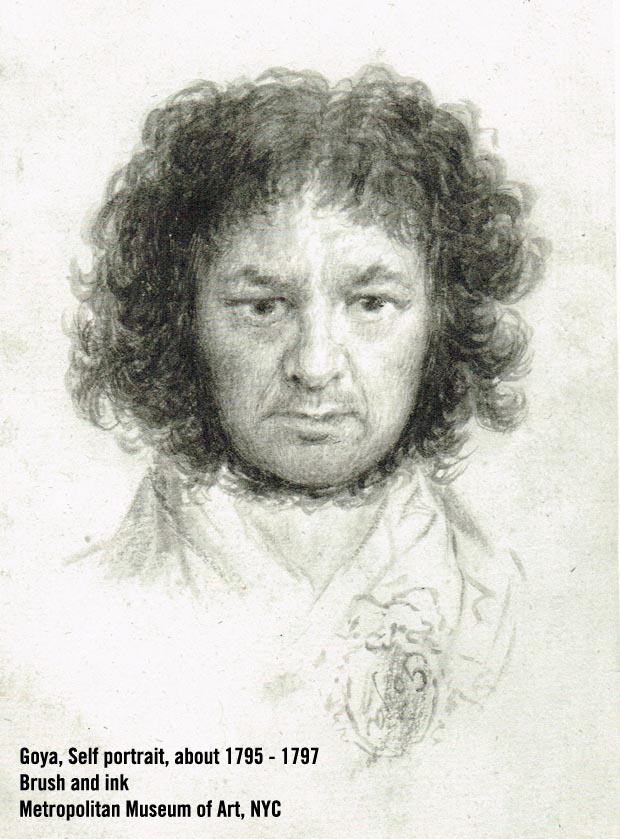
Self-Portrait
1795-1797 estimated by Pierre Gassier and Juliet Wilson in The Complete Works of Goya, 1981 edition
6x3 5/8 inches
152 mm x 91 mm
Metropolitan Museum of Art - see their page on this artwork here
New York City, United States
Goya's hair
"Wild hair" is often in art a visual expression of inner emotion, with the surface of the person shown calm or fixed into a determined pose while the implied motion of the hair displays the interior state or power of the individual. In this way hair is sometimes utilized in art in a way similar to other objects suitable for motion: capes, flags, and on some occasions (and in some Goya artwork) ladies dresses, that is, they are visual cues as to the hidden emotion of the human object in the artwork, or demonstrate a general theme for the entire piece of art. (They also are ways to add motion to what might otherwise be a completely still and 'stodgy' image).
Hair itself has sometimes stood in as a metaphor for the individual it is from, for example when Beethoven (a man often shown visually in a way similar to the classic Goya image of "wild-haired genius") who would cut locks of his hair to be given to an admirer. A more common practice is when friends or lovers (or parents with a child) preserve hair locks or exchange them as very personal gifts.
"As he grew older, Goya turned to a more profound exploration of his face and head. In one sketch [referring to the ink wash in the Metropolitan collection] there is something of the Romantic sensation of the wildness of genius and the potency of the creative imagination, expressed by the staring eyes and the dramatically curling hair."
GOYA, by Sarah Symmons, Page 136, Phaidon Press Limited, 1998
"Illness had deafened Goya with a shock that transfigures his drawings as if by explosion. Henceforth, everyday doings recede before the drive of his inward visions..."
GOYA: 67 DRAWINGS, comments by A. Hyatt Mayor, Plate 23, New York Graphic Society
"I am the same as ever; as far as my health goes, sometimes I feel furious, in a temper I find unbearable, sometimes I feel calmer, as when writing you now. But I'm already feeling tired; all I can say is that on Monday, God willing, I am going to a bullfight, and I would have liked you to come with me..."
A letter to Zapater, from Goya, 1794
AMAZON
Goya The Terrible Sublime - Graphic Novel - (Spanish Edition) - Amazon
"From this headlong seizure of life we should not expect a calm and refined art, nor a reflective one. Yet Goya was more than a Nietzschean egoist riding roughshod over the world to assert his supermanhood. He was receptive to all shades of feeling, and it was his extreme sensitivity as well as his muscular temerity that actuated his assaults on the outrageous society of Spain." From Thomas Craven's essay on Goya from MEN OF ART (1931).
"...Loneliness has its limits, for Goya was not a prophet but a painter. If he had not been a painter his attitude to life would have found expression only in preaching or suicide." From Andre Malroux's essay in SATURN: AN ESSAY ON GOYA (1957).
"Goya is always a great artist, often a frightening one...light and shade play upon atrocious horrors." From Charles Baudelaire's essay on Goya from CURIOSITES ESTRANGERS (1842).
"[An] extraordinary mingling of hatred and compassion, despair and sardonic humour, realism and fantasy." From the foreword by Aldous Huxley to THE COMPLETE ETCHINGS OF GOYA (1962).
"His analysis in paint, chalk and ink of mass disaster and human frailty pointed to someone obsessed with the chaos of existence..." From the book on Goya by Sarah Symmons (1998).
"I cannot forgive you for admiring Goya...I find nothing in the least pleasing about his paintings or his etchings..." From a letter to (spanish) Duchess Colonna from the French writer Prosper Merimee (1869).
GOYA : Los Caprichos - Dover Edition - Amazon
